Businesses worldwide invest heavily in technology to gain a competitive edge, but without a clear IT strategy even the largest budgets can underdeliver. Spending alone isn’t enough—you need a roadmap that aligns technology with business goals.
“An effective IT strategy transforms technology from a cost center into a growth engine, driving innovation and measurable business outcomes.” — Philipp Graves, CEO of Cytranet.
With IT expenditures rising, now is the time to ensure every dollar delivers measurable value. Below are practical steps to build an IT strategy that boosts innovation, efficiency, and long-term growth.
What is an IT strategy?
An IT strategy is a roadmap that aligns technology investments and operations with business objectives. It describes how IT will support the organization, drive innovation, and improve efficiency.
Core components:
– Vision and goals: the destination for IT efforts.
– Resource allocation: budgeting and staffing.
– Performance metrics: KPIs to measure success.
Why an IT strategy matters
A strong IT strategy ensures technology investments produce tangible results:
– Improves operational efficiency through streamlined processes.
– Enhances security by reducing risk with proactive measures.
– Drives growth by aligning IT initiatives with business expansion.
Without clarity, you risk falling behind competitors leveraging technology for advantage.
Steps to develop a practical IT strategy
Step 1: Assess the current IT environment
Conduct a thorough IT audit covering infrastructure (hardware, software, networks), processes, pain points, security posture, and how effectively tools are used. This baseline reveals strengths, weaknesses, and opportunities.
Step 2: Define business goals and align IT priorities
Translate business objectives—scaling operations, improving customer experience, cutting costs—into IT priorities. For example, prioritize CRM and analytics for CX improvements or cloud and automation for growth and scalability.
Step 3: Identify key stakeholders
Include executives who control budgets, IT staff who understand capabilities, end-users for usability input, and external partners or consultants for specialized skills. Early involvement builds buy-in and reduces resistance.
Step 4: Map short- and long-term plans
Balance quick wins with strategic initiatives: short-term upgrades and security fixes vs. long-term moves like hybrid cloud migration. Use roadmaps to visualize timelines, dependencies, and milestones.
Step 5: Budget and allocate resources
Detail costs for hardware, software, staffing, training, and maintenance. Prioritize high-ROI projects and consider outsourcing specialized tasks (e.g., cybersecurity) to conserve internal resources. Reserve contingency funds for emergencies or new opportunities.
Step 6: Establish KPIs and success metrics
Define relevant KPIs such as system uptime, application performance, cost savings, productivity, and customer satisfaction. Set baselines, monitor continuously with dashboards, and adjust strategies when metrics fall short.
Step 7: Implement, monitor, and adapt
Roll out in phases, communicate changes clearly, and use monitoring tools to track progress. Create feedback loops with stakeholders and remain flexible—technology and market conditions change rapidly, so your strategy must evolve.
Common challenges and solutions
– Misalignment between IT and business: Schedule regular collaboration between IT and business leaders.
– Budget constraints: Prioritize initiatives with the highest ROI.
– Resistance to change: Provide training and clear communication to ease transitions.
Keeping your IT strategy relevant
– Conduct regular strategy reviews (annually or as needed).
– Stay informed about emerging technologies and trends.
– Invest in ongoing training to keep your workforce current.
Traditional IT management vs. strategic IT development
Traditional IT focuses on maintenance and reactive budgeting, while strategic IT aligns with business goals, emphasizes ROI and innovation, and is designed for adaptability.
Ready to transform your IT strategy? Partner with Cytranet
An effective IT strategy bridges potential and reality—turning technology into a growth driver that protects and propels your business. Cytranet brings experience to help organizations—from initial assessments to implementation and ongoing optimization. Contact Cytranet to schedule a consultation and take the first step toward IT excellence.
Achieve your business goals faster with expert IT consultants in Florida: Orlando, Jacksonville.
The post Mastering the Art of Developing an IT Strategy for Your Business appeared first on Cytranet.


